Between Two Castles of Mad King Ludwig — Building with friends
There are so many modern board games these days that it’s hard to play all of them, so why not tackle two at once with Between Two Castles of Mad King Ludwig?
If you’re new to the scene, it can be especially hard to track down some of the offerings that have been instrumental in coining the phrase “modern board game.” Many of these modern classics have been superseded by newer or perhaps more visually striking games. Two such games are Castles of Mad King Ludwig and Between Two Cities, which were released in 2014 and 2015 respectively before coming together as Between Two Castles of Mad King Ludwig.
Whilst both games are still widely available, the publishers at Stonemaier Games and Bezier Games have taken the unprecedented move of joining forces to create Between Two Castles of Mad King Ludwig; a game that takes from both of the classics that inspired it, adding its own unique twist. Can such an ambitious mash up work? We’ve been playing it for the past few weeks, so stick around to find out.
From now on, I’ll be referring to Between Two Castles of Mad King Ludwig simply as Between Two Castles, because if I don’t, I’m bound to make a mistake by referring to it as one of the titles that inspired it at some point. Whilst this elaborate title might seem to be overly long, it actually has a strong basis in fact, because without any doubt, Between Two Castles captures the spirit of both of the games that inspired it.
In Between Two Cities, the killer hook was the fact that players each sat — literally — between two model cities. The players would then each contribute to the cities on either side of them, work semi-cooperatively to score points. Castles of Mad King Ludwig is also an interactive building game, wherein players take turns to act as a master building, setting building prices for other players and then collecting anything left behind.
Between Two Castles takes the concept from Between Two Cities by placing players in a cooperative role between two castle foyers, which is where the influence from Castles of Mad King Ludwig comes in. Rather than introducing the auction element of the master builder, Between Two Castles actually uses a tile drafting mechanism to help players build out their castles.
This results in very straightforward turns and a fast pace. In brief, a turn begins with each player taking a stack of nine face down tiles from the exceptionally useful box insert and then choosing two. The remaining seven tiles are then passed to their left and then the players discuss between themselves which of the two tiles in their hand will go into either the castle on their left or right hand side. When four rounds of drafting have been completed, the excess tile is discarded back to the box.
Aside from its inherent simplicity, there are several things that make Between Two Castles interesting, most notably related to the fantastic artwork and the variety of pieces and how they interact with each other. There are hundreds of unique tiles in Between Two Castles, almost all of which feature engaging artwork depicting rooms and spaces of almost all varieties. I loved examining The Cheese Room for the first time, for example, whilst The Rabbit Room will be a marvel for players who are fans of our furry friends.
Functionally, these tiles are also hugely important. There are seven basic kinds of room, each of which has its own placement restrictions, typical scoring potential and bonus for placing multiples. Without getting into the really granular details, each kind of tile will score depending on where it is placed and what kind of tiles are around it.
Some tiles provide score multipliers or more global benefits, but all of these benefits are on a theme. This kind of leads to castles developing around a core concept, often informed by the starting Throne Room tile, each of which has a unique scoring condition of its own. There are also bonuses for placing three tiles of a kind, such as drawing from the “standard” buildings, or placing a specialist tile into the Throne Room for a benefit.
Placement restrictions do exist in Between Two Castles, especially for underground rooms, bedrooms and outdoors areas. Each of these is more or less self-explanatory — underground rooms must be under the level of the Throne Room, whilst bedrooms must be above it. Outdoor rooms can be on any level, but no other tile can be placed above them. These rules are simple to follow if you imagine that each tableau is a horizontal cross section of the castle being built.
When you put together the combination of ideas in Between Two Castles, you can imagine how it begins to shape up in an accessible way, yet the decision making becomes progressively more challenging as the game continues. At the start of the game, choosing two tiles from a large stack and aligning them to the basic objective that the Throne Room in each of your castles offers is quite simple, but by the late game these decisions become a calculative nightmare.
It is not uncommon for players to face agonising decisions about which tiles to draft for their castles, or even which of the tiles taken should go in which castle. Some players will handle this with negotiation, laughter and a relatively lighthearted outlook based on gut feel, whilst others will painstakingly count the value of each option in each castle. Thankfully, the designers ensure that scoring of each tile is almost always localised to those tiles around it, so analysis paralysis, whilst present, is minimal.
Ultimately, the two players who have the highest scoring castle sat between them will be in line to win the game, but it is those players second castle that decides the winner. As such, players must ensure that each of their partnerships is working well, because anyone who focuses particular attention on one castle and not the other is likely to be a Kingmaker for their partner.
The gameplay in Between Two Castles is light enough that I think it can be considered a gameplay game, since it is very simple to teach and to learn. It also helps that it looks so magnificent, with everything from the box insert to the player aids being superbly produced. The tiles themselves are absolutely lovely, whilst the instruction manual is clear, informative and attractive.
Overall, I think Between Two Castles is a very interesting addition to any collection and will be of particular interest to players who enjoy light setup and learning, but still have an interest in games with complex decisions. The social aspect really helps Between Two Castles stand out, as does the support for six players right out of the box, which is fairly rare.
A copy of Between Two Castles of Mad King Ludwig was provided for review purposes. You can find out more about it here.

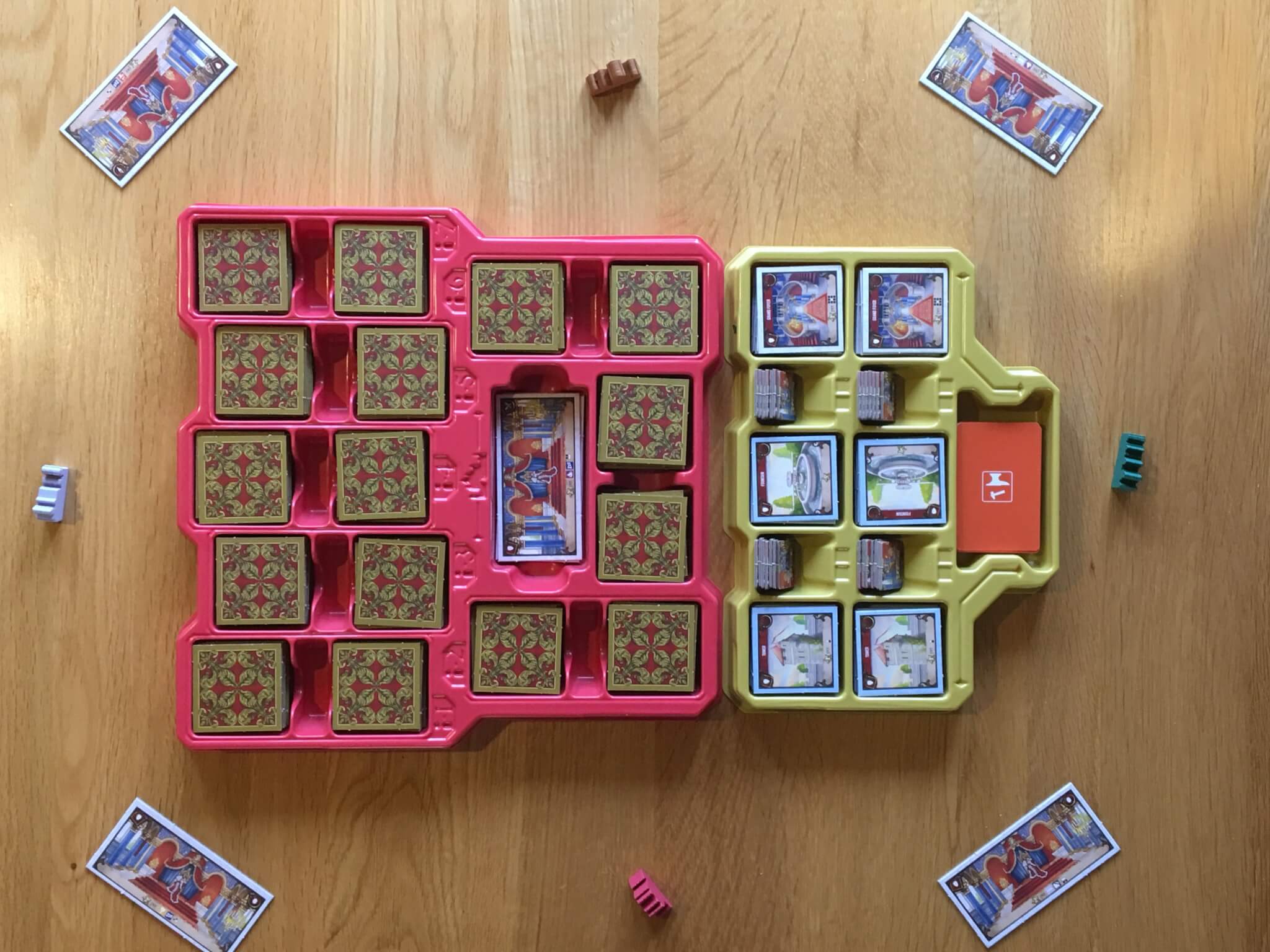
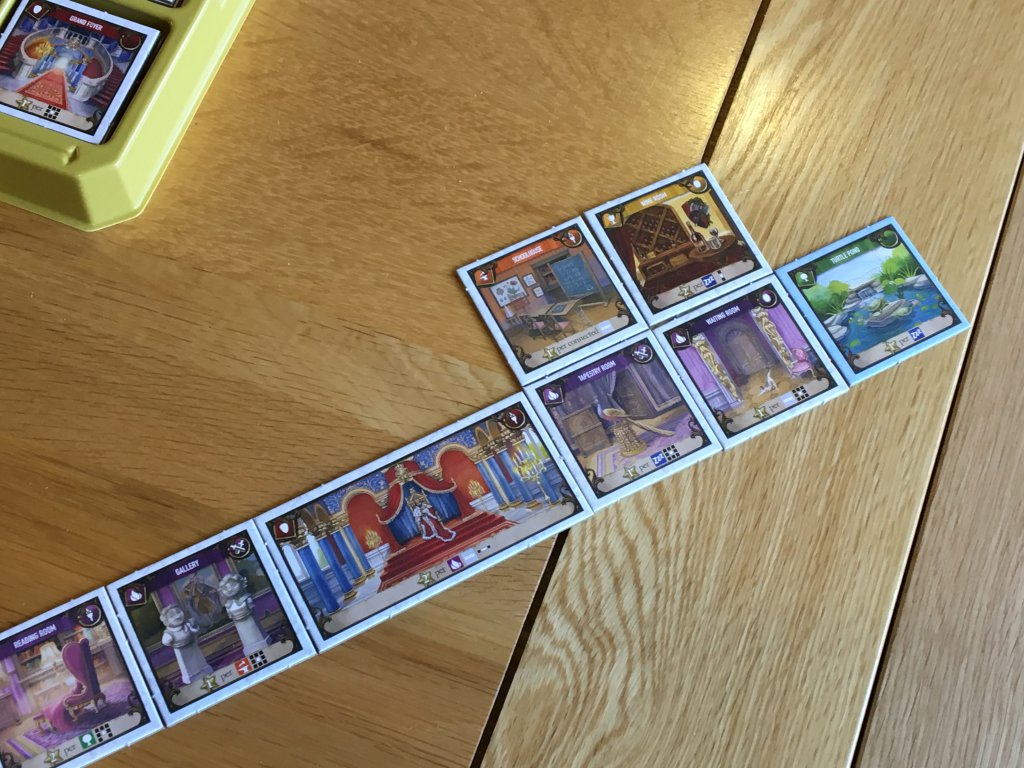
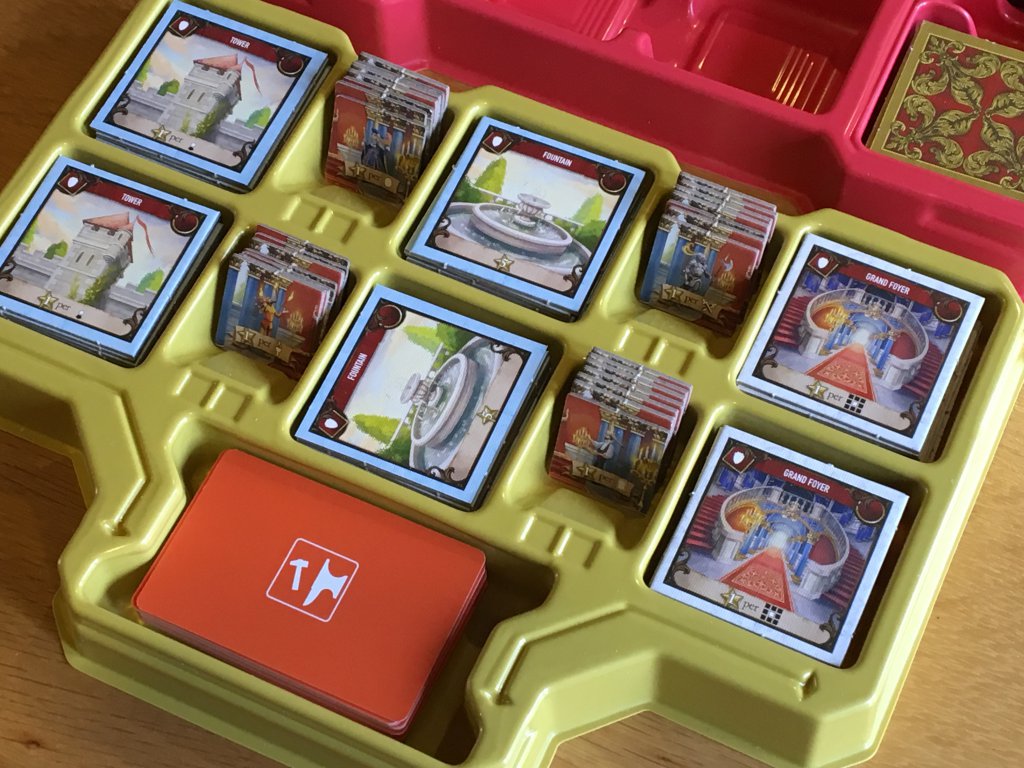
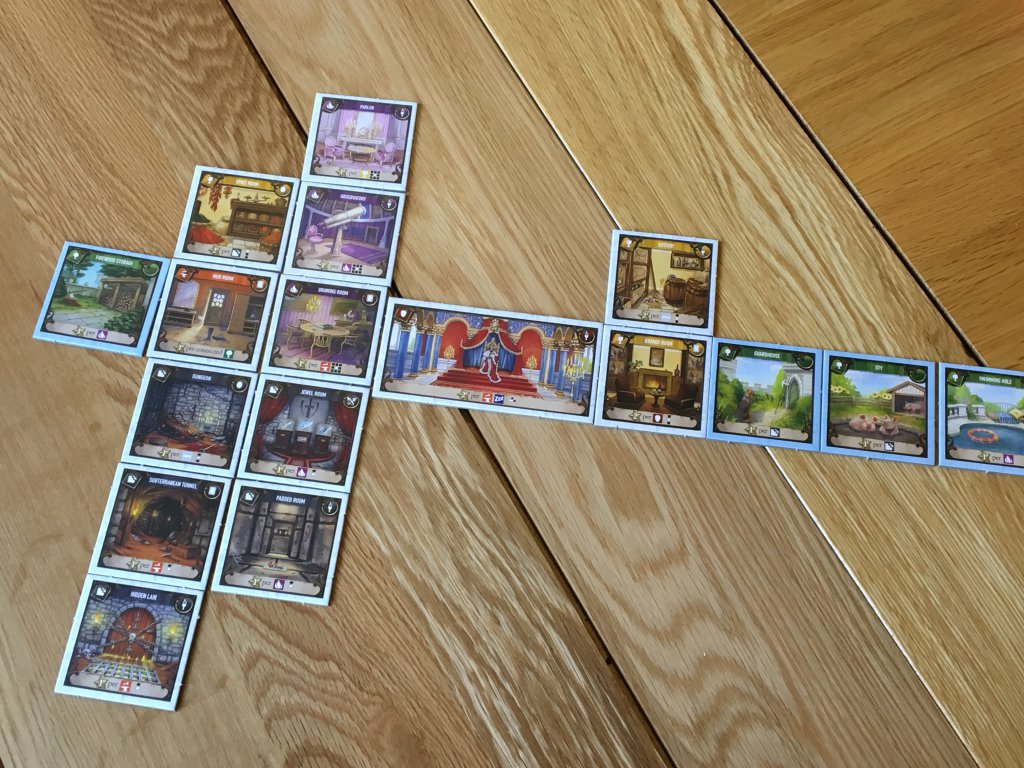
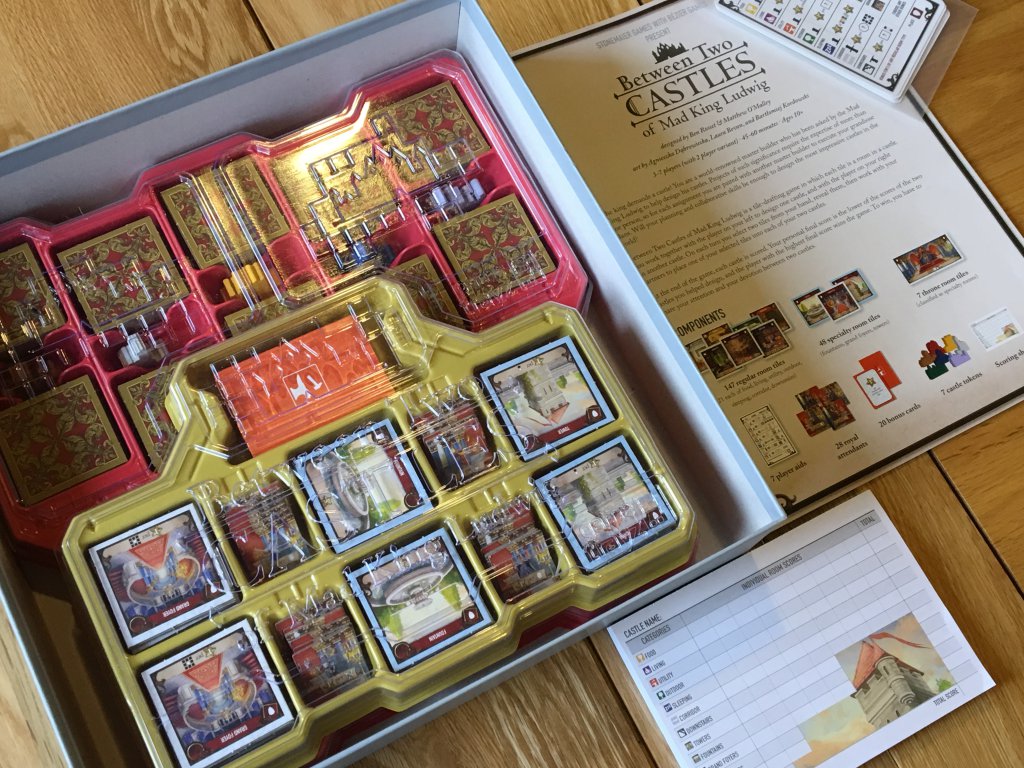
Comments are closed.